deep foundations
Deep foundations transfer building loads to the earth farther below the surface than a shallow foundation
Terra specializes in complex deep foundation projects. Our team of experienced Project Managers have the expertise to offer creative solutions throughout all phases of design and construction. We have invested in the best equipment in the industry and hire only skilled union workers.
We recently added Compacted Aggregate Piers (CAP’s) to our menu of foundation support solutions. CAP’s is a technique that improves the strength and compressibility of marginal to low strength ground. In doing so, CAP’s allow for the construction of conventional spread foundations without extensive modification or rework of the existing subgrade soils. CAP’s are especially useful when constructing on Brownfield or contaminated sites.
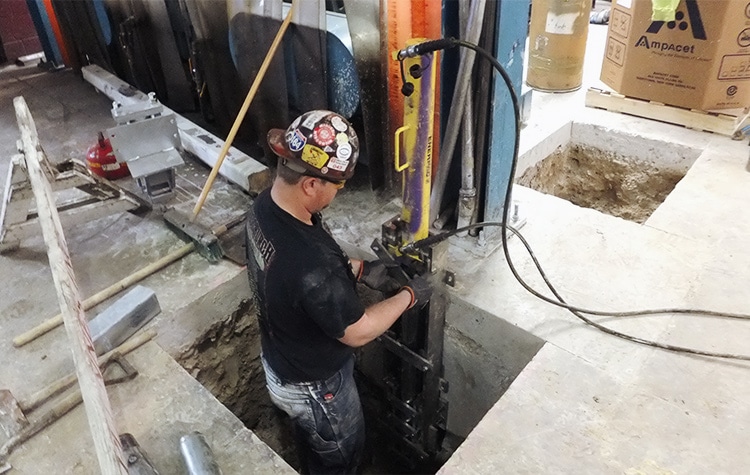
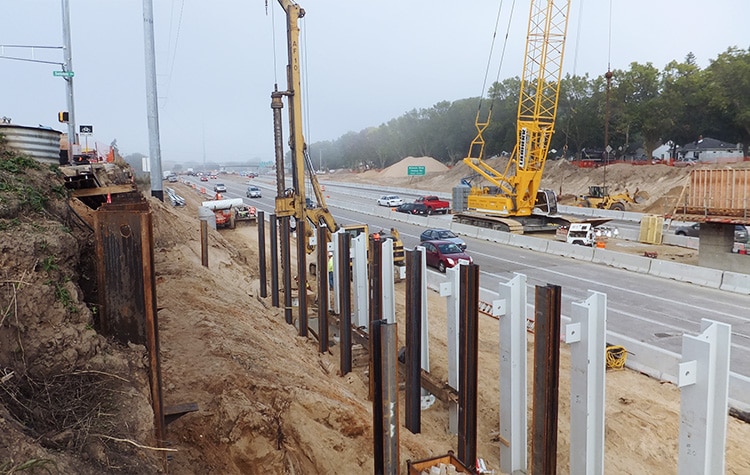
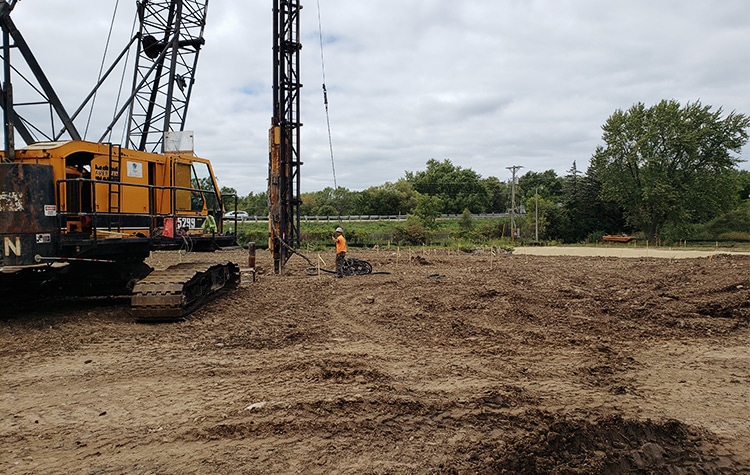
Compacted Aggregate Piers (CAP’s)
Aggregate piers are columns of compacted stone installed in poor soil to increase bearing pressure and mitigate settlement under structural footings. They are a cost-effective method to reinforce soft, cohesive soil and poor fill for all types of structures, or on contaminated sites. Compacted aggregate piers are also referred to as Rammed Stone Columns, Rammed Aggregate Piers or Rammed Stone Piers.
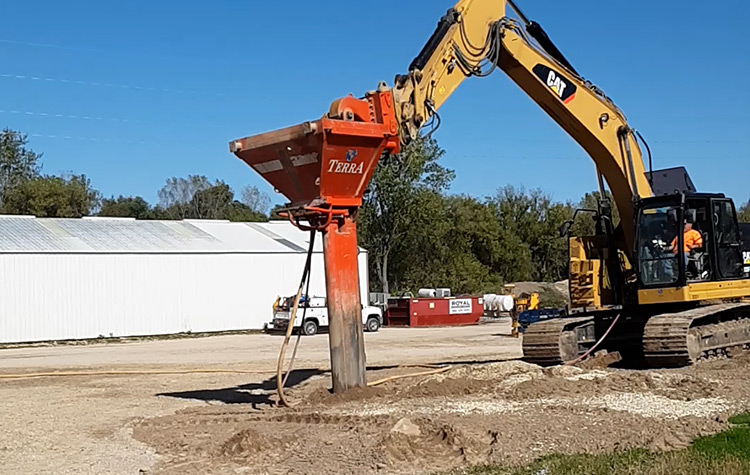
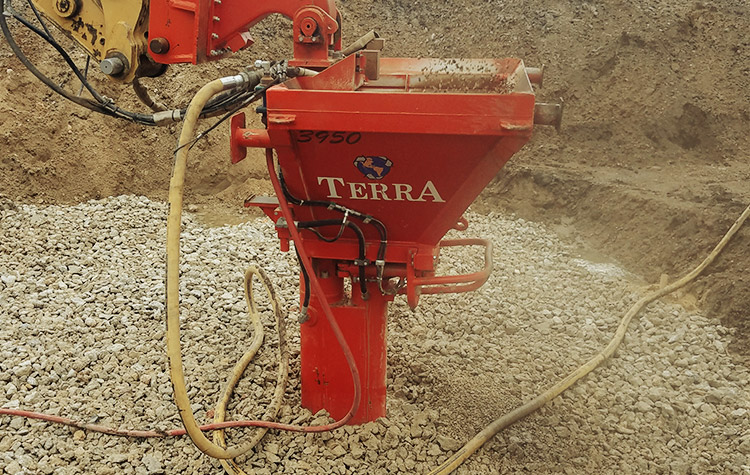
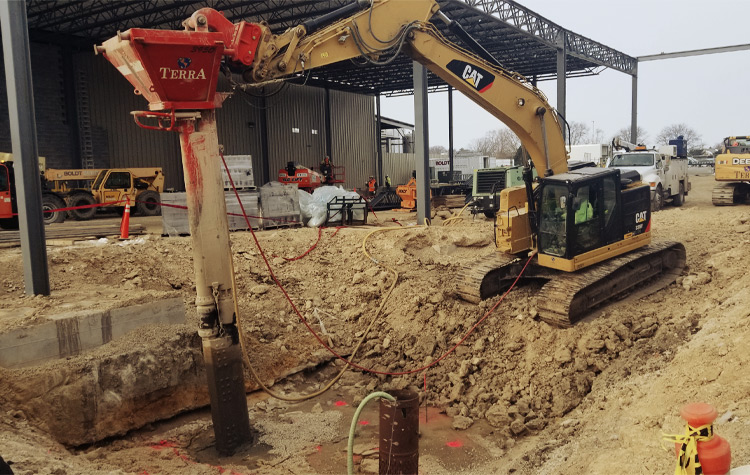
Drilled Shafts
Drilled shafts are a reliable, economical and versatile way to construct deep foundations in soil and rock. Also referred to as Caissons, drilled shafts are designed to support buildings, highway bridges and other large structures.
Caissons
A caisson foundation may also be referred to as drilled in place shafts or drilled piers. Caissons are drilled either to bedrock (called “rock caissons”) or deep into the underlying soil strata where soil suitable to carry the structure load has been identified. Drilled in place foundations with straight shafts support a wide variety of loads including buildings, bridges and towers.
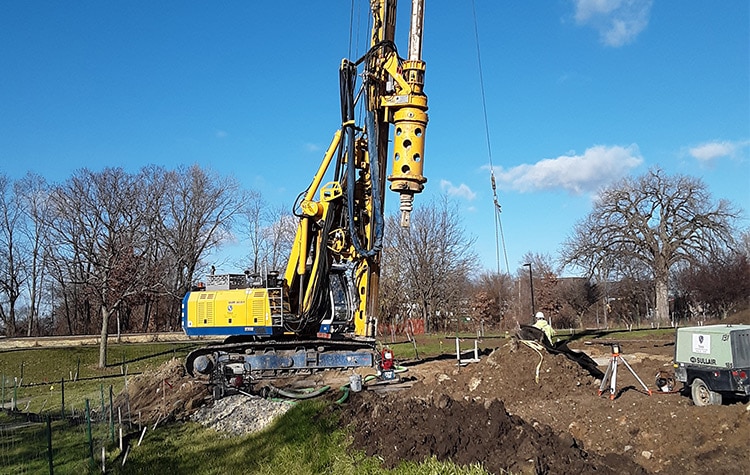
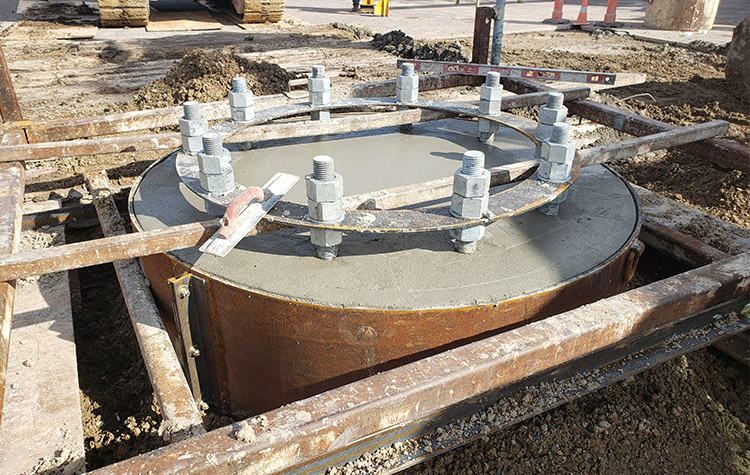
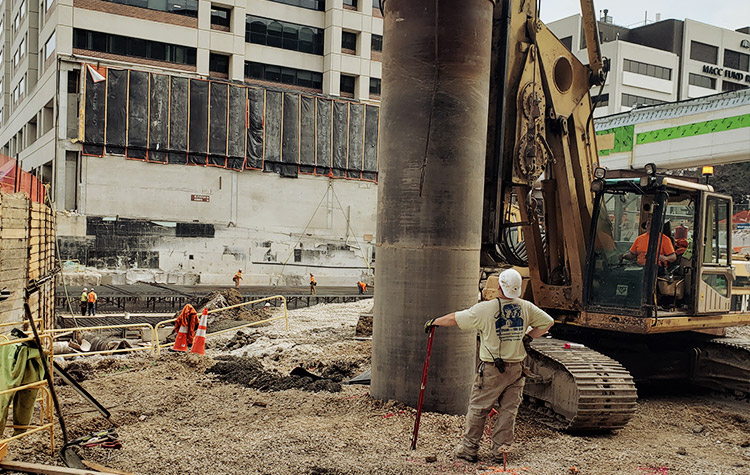
Micropiles
Micropiles, also called mini piles, are often used for underpinning. They are also used to create foundations for a variety of project types, including highway, bridge and transmission tower projects. They are especially useful at sites with difficult or restricted access, or with environmental sensitivity.
A micropile is a small-diameter, drilled and grouted non-displacement pile that is typically reinforced. Micropiles can withstand relatively significant axial loads and moderate lateral loads, and may be considered a substitute for conventional driven piles or drilled shafts or as one component in a composite soil/pile mass. Micropiles are installed by methods that cause minimal disturbance to adjacent structures, soil, and the environment. They can be installed where access is restrictive and in all soil types and ground conditions.
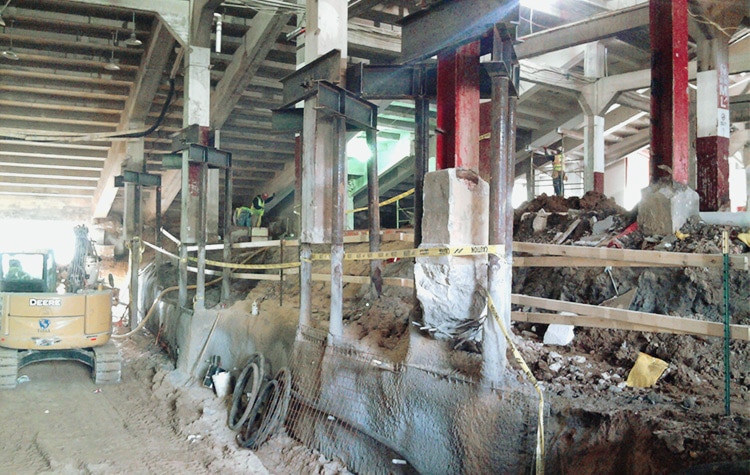
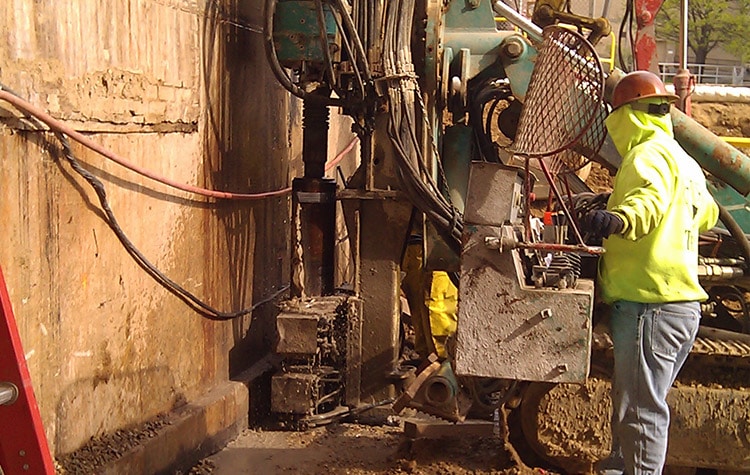
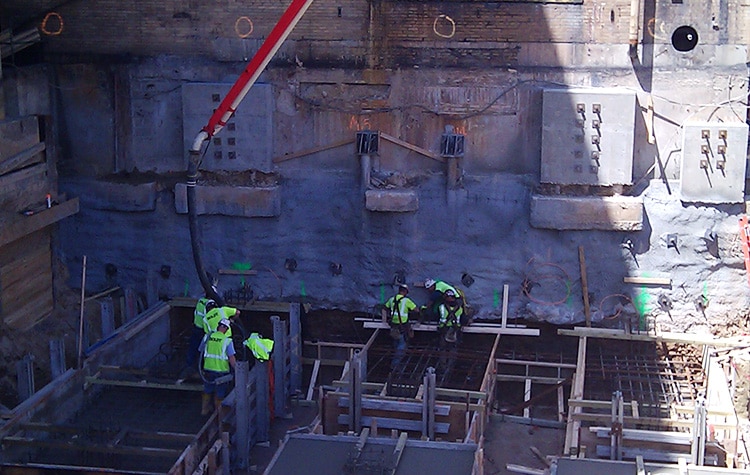
Pre-boring
Pre-boring is used for deep foundations, consisting of precast concrete piles, open or closed-end steel pipe piles, steel H-piles, or auger-cast piles to support buildings, highway bridges, and other infrastructure systems. The piles at a project site derive their load carrying capacity from “side bearing” along their embedded lengths as well as from “end resistance.” Pre-boring is a method used to facilitate driving of large displacement piles in hard/dense soils. A pilot hole, generally smaller in size than the pile to be installed, is first bored to a specified depth. By pre-boring a pilot hole, the “end bearing” and “side friction” within the pre-bore zone are reduced, thus aiding the driving of the pile.
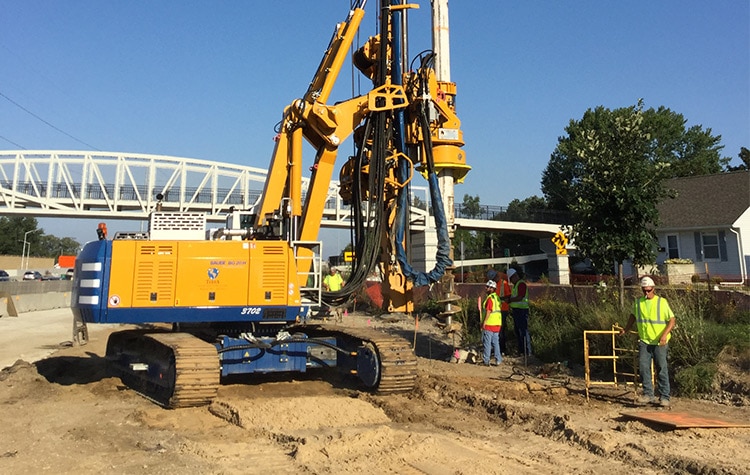
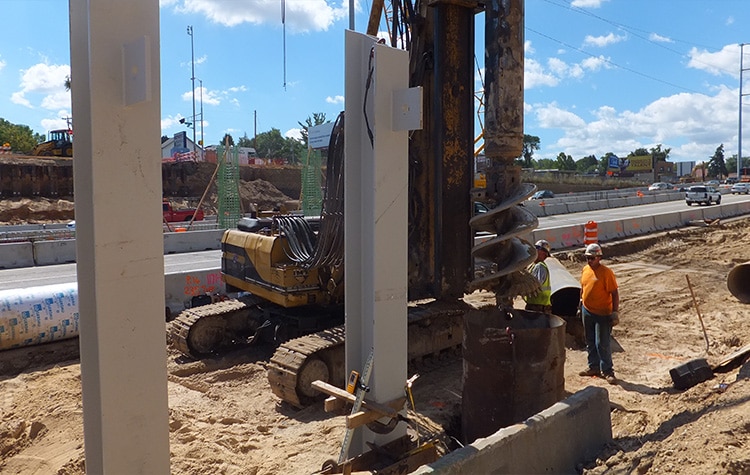
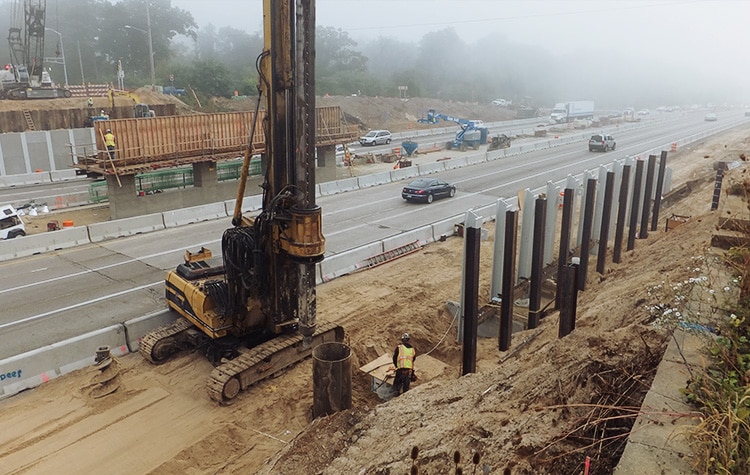
Helical Piles
A helical anchor/pile is an extendable deep foundation system with helical bearing plates welded to a central steel shaft. Load is transferred from the shaft to the soil through these bearing plates. Helical Piles are used in tension and compression applications to support or anchor a foundation system.
Segments or sections are joined with bolted couplings. Being a true helical shape, the helices do not auger into the soil but rather screw into it with minimal soil disturbance. Helical plates are spaced at distances far enough apart that they function independently as individual bearing elements; consequently, the capacity of a particular helix on a helical anchor/pile shaft is not influenced by the helix above or below it.
Push Piles
A Push Pile, often referred to as a push pier, are a very effective method to support a sinking foundation and restore structural integrity. These push piles are basically heavy-duty steel tubes that we push into the earth until they reach rock or solid soil that can support the weight of your structure. Once installed, your building is hydraulically raised to proper height. Very little equipment is needed to install these push piers, making installation quick and easy. A push pile can be installed in tight spaces and are ideal for repairing heavy structures such as commercial buildings, or other brick structures.
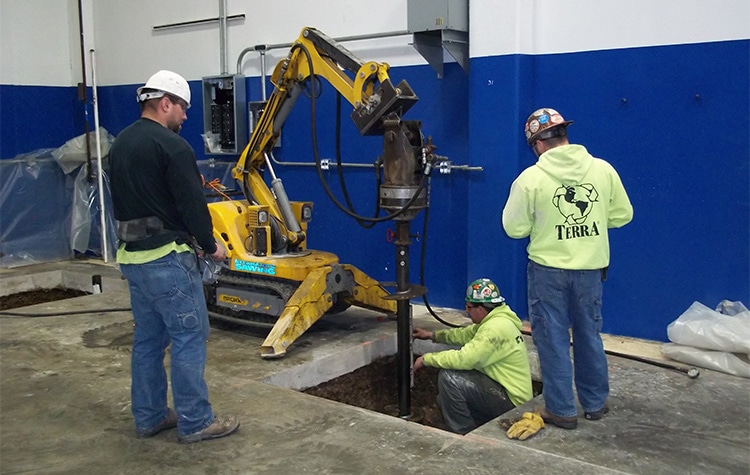
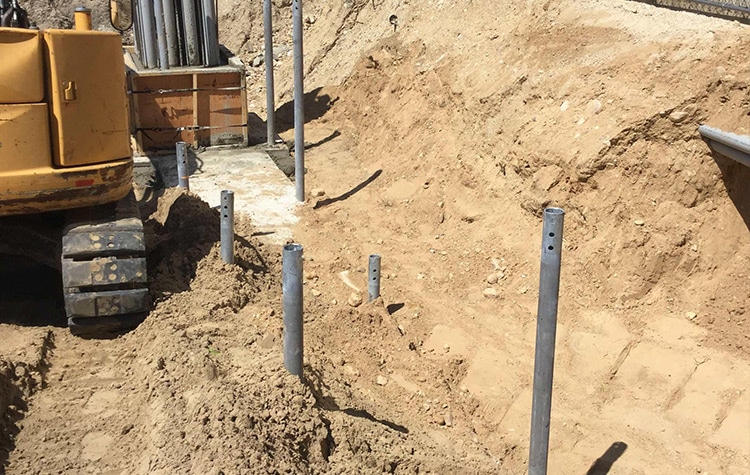
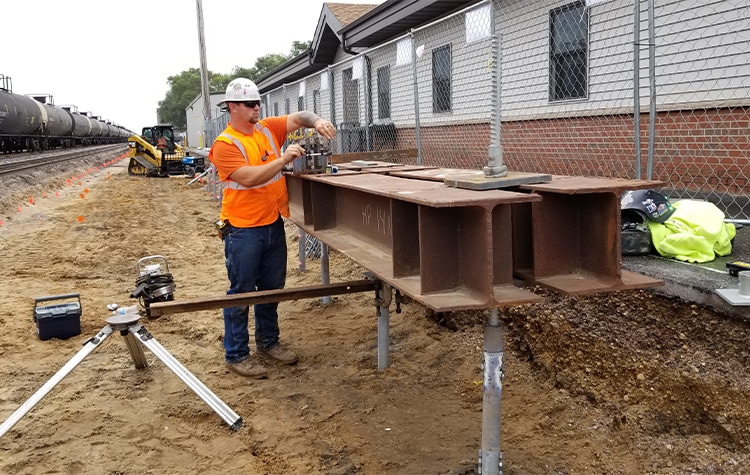
Driven Piles
A driven pile is a relatively long, slender column, provided to offer support or to resist building and soil forces. Driven piles can be physically inspected prior to and during installation, by impact hammering or vibrating the pile into the earth.
Driven piles can be: Steel (H-Piles, Pipe Piles or Sheet Piles), Concrete or Timber.
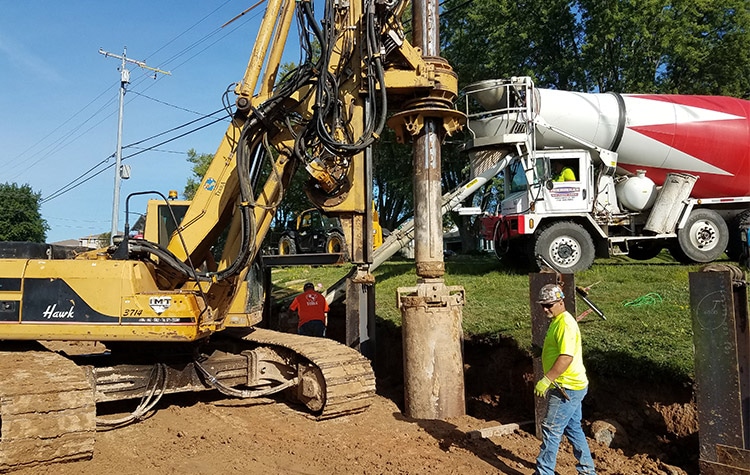
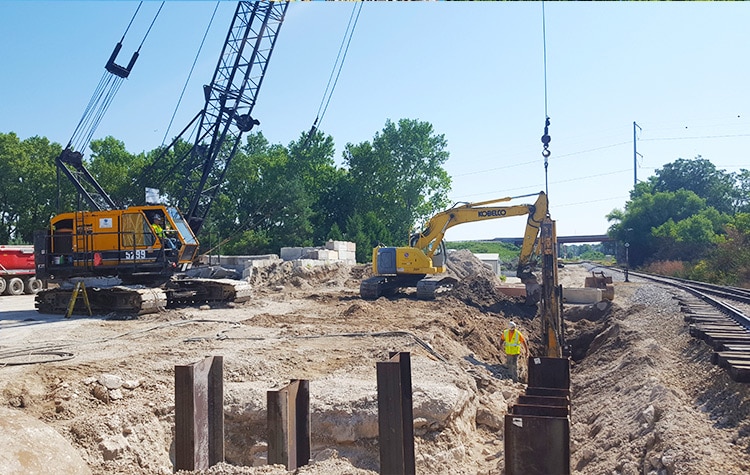
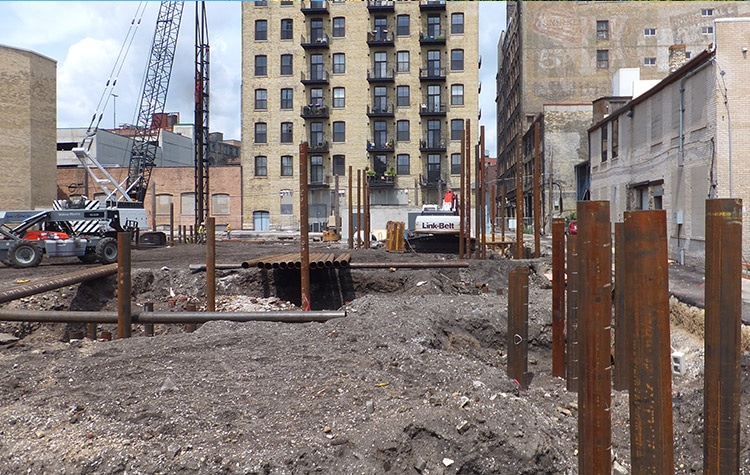
Underpinning
In construction or renovation, underpinning is the process of strengthening the foundation of an existing building or other structure. Underpinning may be necessary for a variety of reasons:
- The original foundation isn’t strong or stable enough.
- The usage of the structure has changed.
- The properties of the soil supporting the foundation may have changed (possibly through subsidence/settling) or were mischaracterized during design.
- The construction of nearby structures necessitates the excavation of soil supporting existing foundations.
- To increase the depth or load capacity of existing foundations to support the addition of another story to the building (above or below grade).
- It is more economical, due to land price or otherwise, to work on the present structure’s foundation than to build a new one.
- Earthquake, flood, drought or other natural causes have caused the structure to move, requiring stabilization of foundation soils and/or footings.
Underpinning may be accomplished by extending the foundation in depth or breadth so it either rests on a more supportive soil stratum or distributes its load across a greater area. Use of micropiles and jet grouting are common methods in underpinning.
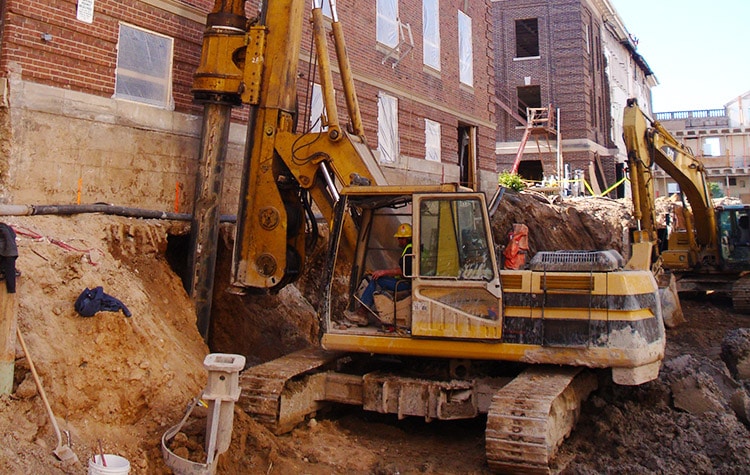
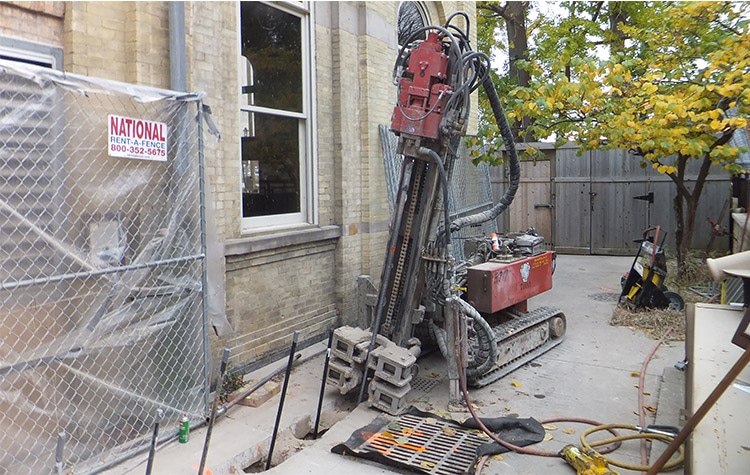
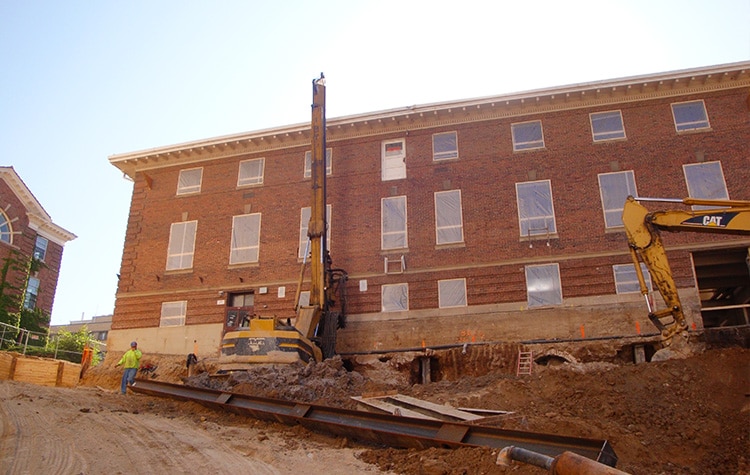
contact us
"*" indicates required fields
